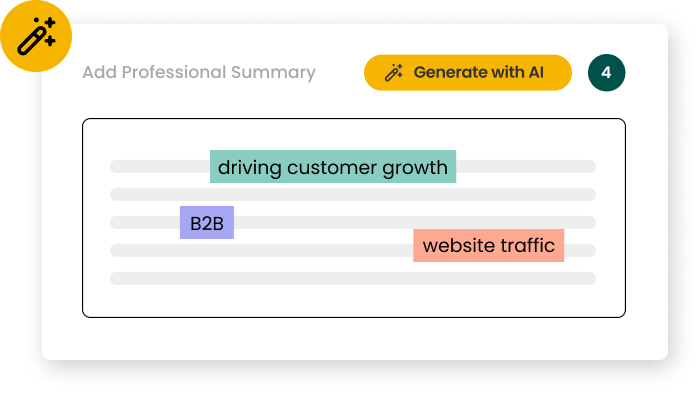How long should I make my Assistive Technology Specialist resume?
For an Assistive Technology Specialist resume, aim for 1-2 pages. This length allows you to showcase your technical expertise, relevant certifications, and experience with various assistive technologies without overwhelming recruiters. Use concise bullet points to highlight key achievements and skills. Focus on recent, relevant experiences that demonstrate your proficiency in assessing client needs, implementing assistive solutions, and staying current with emerging technologies in the field.
A hybrid format works best for Assistive Technology Specialist resumes, combining chronological work history with a skills-based approach. This format allows you to showcase both your technical expertise and career progression. Key sections should include a professional summary, skills matrix, work experience, education, and certifications. Use a clean, accessible layout with clear headings and bullet points. Incorporate industry-specific keywords throughout your resume to optimize for applicant tracking systems (ATS).
What certifications should I include on my Assistive Technology Specialist resume?
Key certifications for Assistive Technology Specialists include RESNA's Assistive Technology Professional (ATP) certification and the ISTE Certification for Educators. These demonstrate your expertise in assistive technology assessment, implementation, and training. Additionally, consider including relevant software certifications (e.g., JAWS, Dragon NaturallySpeaking). List certifications in a dedicated section, including the certifying body and expiration date. Highlight recent or in-progress certifications to show your commitment to ongoing professional development.
What are the most common mistakes to avoid on a Assistive Technology Specialist resume?
Common mistakes on Assistive Technology Specialist resumes include focusing too heavily on technical jargon without demonstrating practical application, neglecting to highlight soft skills like communication and empathy, and failing to quantify achievements. Avoid these pitfalls by balancing technical expertise with examples of successful client outcomes. Use metrics to illustrate your impact, such as the number of clients assisted or improvement in user productivity. Finally, ensure your resume is fully accessible, demonstrating your commitment to inclusive design principles.
